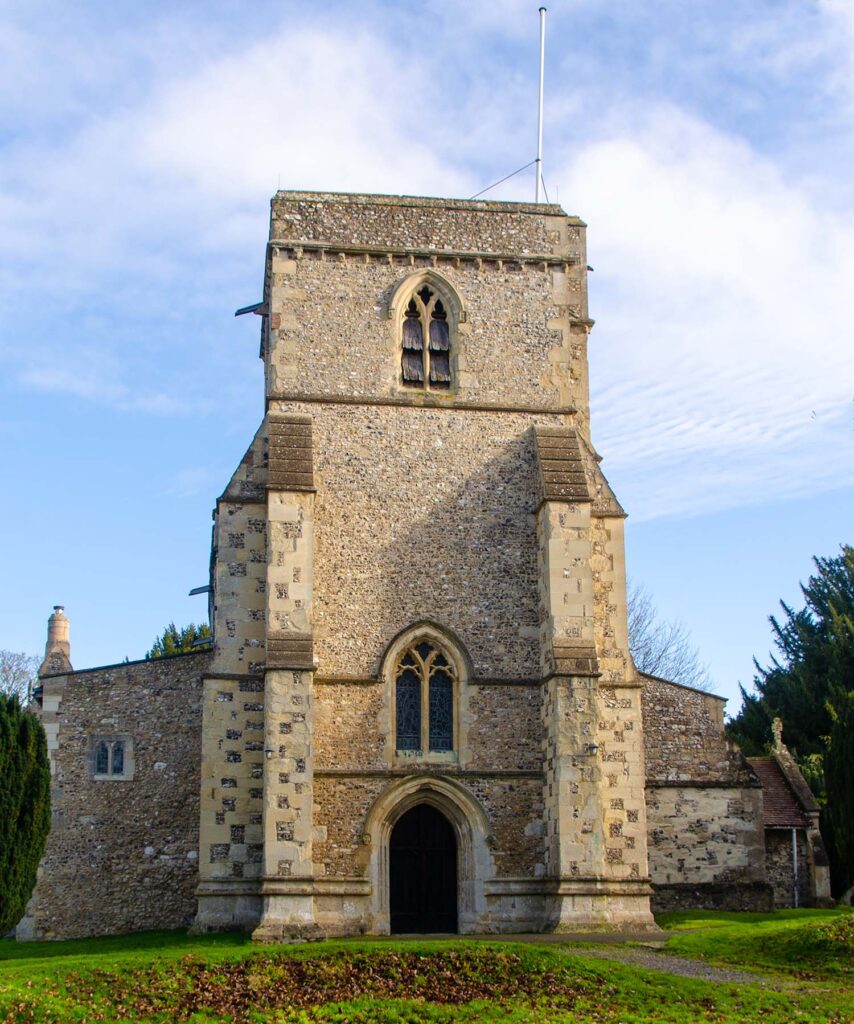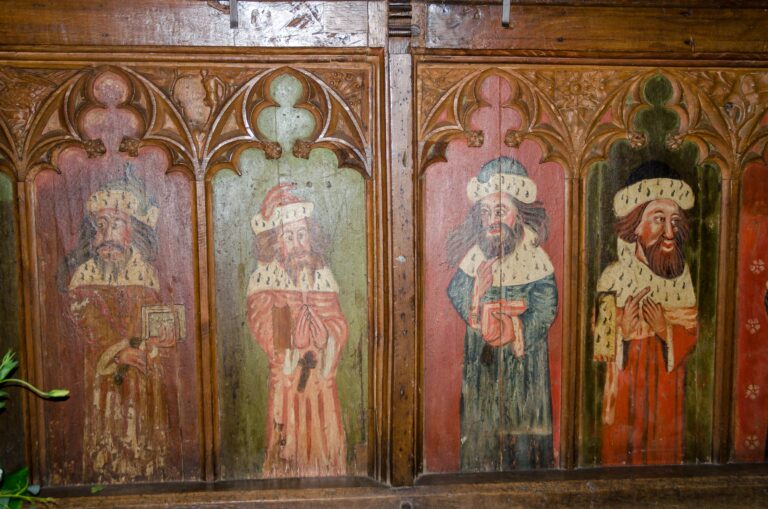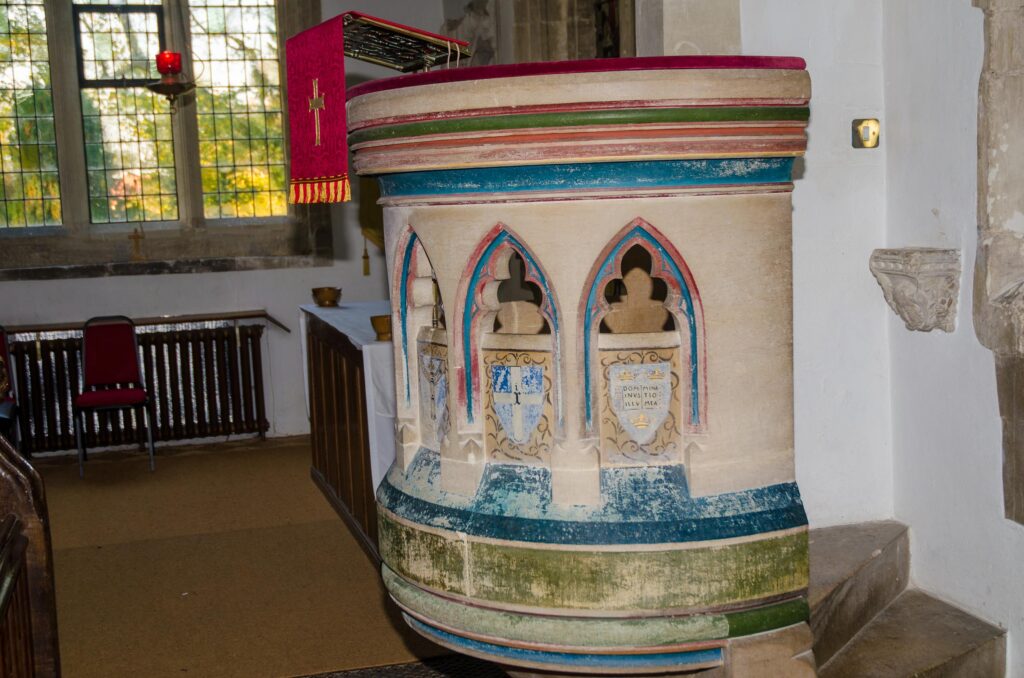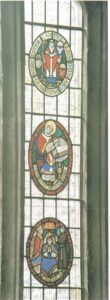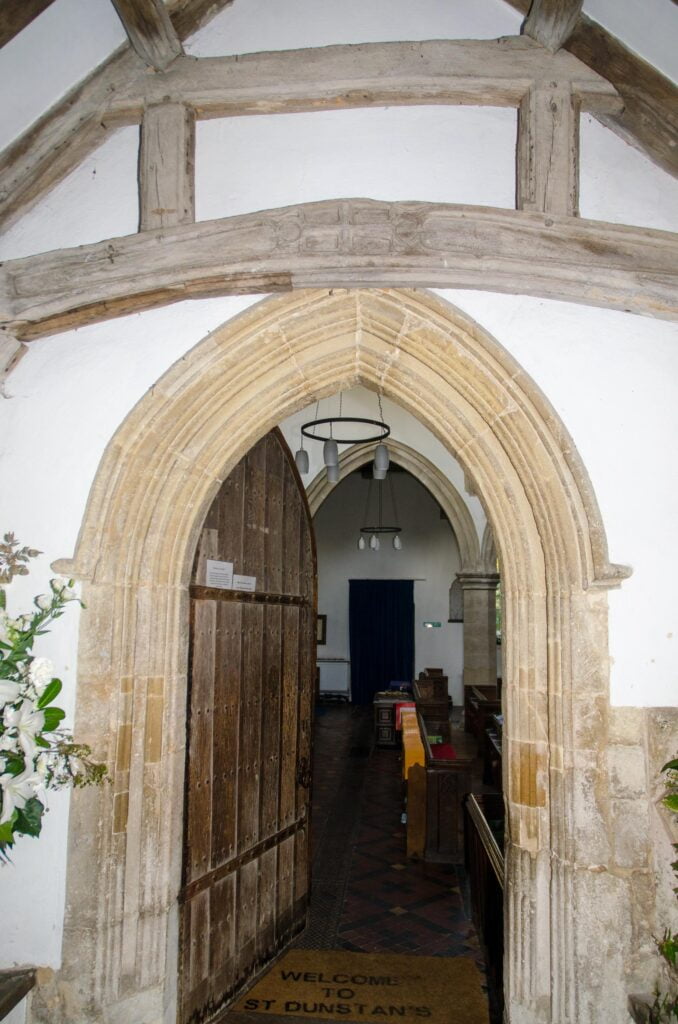
By the inner door of the porch is all that is left of the Holy Water stoup, placed so that villagers might make the sign of the Cross upon themselves when entering and leaving. Among the clergy who served the parish as Rector have been a number who became deans and three who became Archbishops of Canterbury, York and Dublin respectively, but the most influential in life and death was John Schorn, monk of Canterbury, who is usually associated with North Marston. His saintly life ensured that when he died there as Rector in 1314 his tomb became a place of miracle cures and pilgrimage until his relics (and the offerings of the grateful) were transferred in 1478 to Edward IV’s new chapel at Windsor Castle. The Dissolution of the Monasteries in the reign of Henry VIII released the land from the possession of Canterbury, but the Archbishop continued to be the patron, and the parish was still thus exempt from the Bishop of Lincoln’s jurisdiction whose Diocese included Buckinghamshire. In 1850, that connection was severed when the benefice passed into the Diocese and patronage of the Bishop of Oxford.
From 1587 the lives and deaths of less exalted inhabitants are recorded in the Parish Registers. Nail holes can be seen in the church door, which served as the parish notice-board, as the porch itself served for a meeting place. The hinges and lock plate date from the 14th century, but the lock and handle plates are 17th century.

